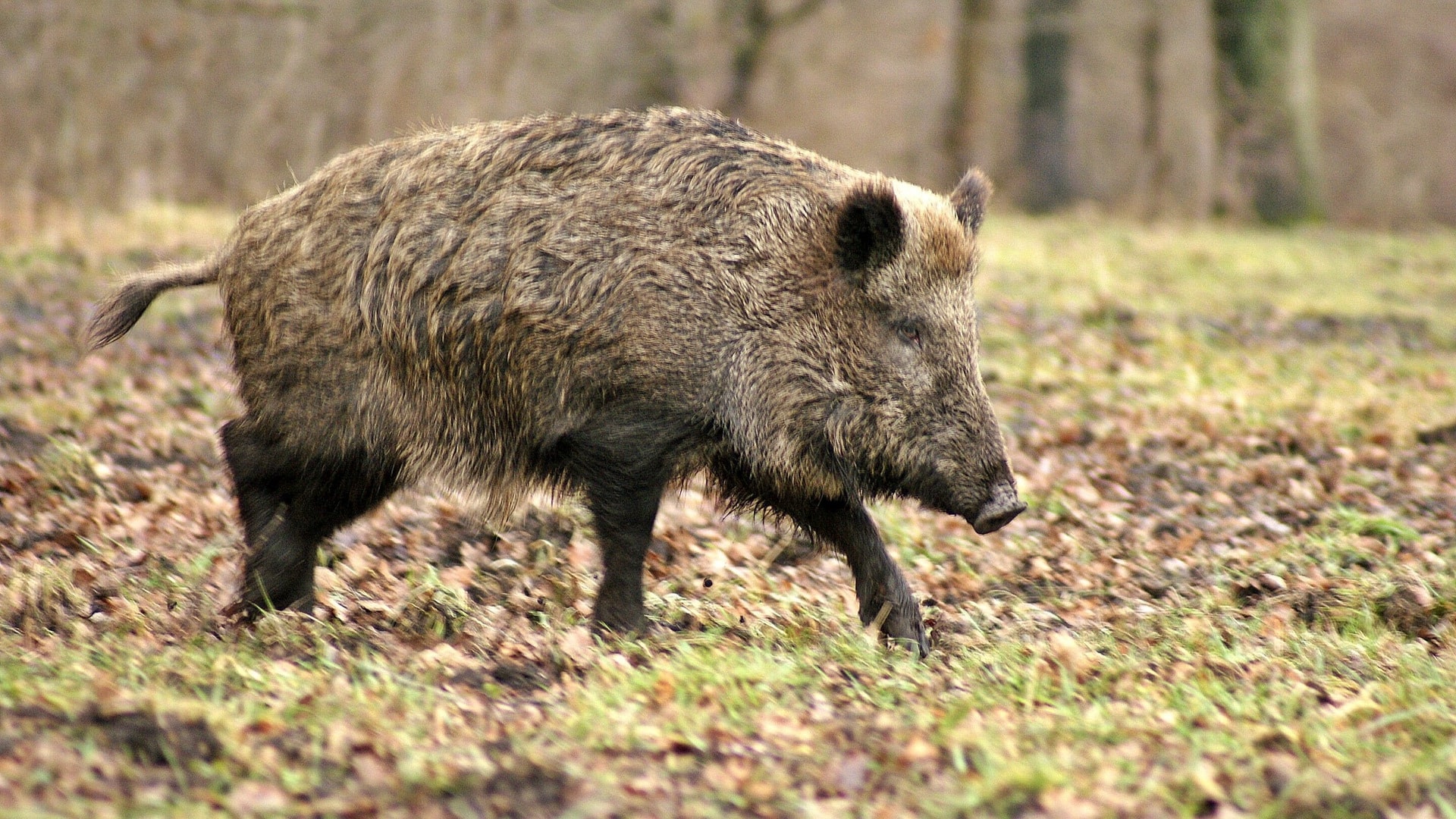Physical characteristics
Feral hogs (Sus scrofa), also known as wild pigs, razorbacks and wild boars, are a medium-sized mammal, with adults weighing between 100 to 400 pounds and standing at around 2 to 3 feet tall at the shoulder. They have a distinctive, elongated snout and razor-sharp tusks that can grow up to several inches long. Their fur can vary in color from dark brown to black, and some individuals may have a reddish or blonde hue.
Behavior
Feral hogs are known to be intelligent, adaptable, and social animals. They typically live in groups called sounders, which can range from a few individuals to more than 20. Sounders are usually composed of one or more sows and their piglets, as well as younger males. Adult males may live alone or in small groups.
They are opportunistic omnivores, meaning they will eat almost anything they can find. They are known to be destructive to crops, property, and natural habitats. They have a keen sense of smell, which they use to find food and avoid danger. They are most active at night but can also be active during the day, especially during cooler months.
Habitat
Feral hogs are found in many parts of the world, including the United States, Australia, and Europe. They were introduced to North America by Spanish explorers in the 1500s and have since spread across the southern and eastern regions of the country. They prefer habitats that offer a mix of cover and open areas, such as woodlands and agricultural fields.
Diet
Feral hogs are omnivorous and will eat almost anything they can find. They primarily feed on plant roots, tubers, and fruits, but they will also consume small animals and carrion. They can cause significant damage to crops and are considered a pest in many agricultural areas.
Breeding
Feral hogs have a high reproductive rate, with females reaching sexual maturity at around six months of age. They can produce multiple litters of up to 10 piglets per year, which can quickly lead to overpopulation and damage to ecosystems and agricultural land.
Ecological role
Feral hogs can have a significant impact on ecosystems, as they compete with native wildlife for resources and can cause damage to habitats. They can also transmit diseases to other animals, including domestic livestock.
Feral Hog Hunting
Feral hog hunting has become a popular sport in many parts of the world, and it is also used as a method of population control. Feral hogs can be hunted using a variety of methods, including traps, dogs, and firearms.
One popular method of hunting feral hogs is with dogs. Hunting dogs are trained to track and corner hogs, allowing the hunter to get into position for a shot. Another popular method is with firearms, either by stalking or stand hunting. Hunters often use bait to attract feral hogs to a specific location.
Hunting feral hogs can be dangerous, as they are known to be aggressive and can attack if they feel threatened. It is important to take proper precautions, such as wearing appropriate clothing and carrying a firearm for self-defense.
Tracks & Signs
Feral hog tracks are not so easily identifiable as they can often be misidentified as deer tracks. However, feral hogs are broader and have more rounded front toes than those of a deer. The tracks are 2-3 in. (5-8 cm) long and prominent dew claws are widely spaced.
Feral hogs are omnivorous and have a diverse diet that includes roots, tubers, insects, small vertebrates, and vegetation. They are notorious for their rooting behavior, where they use their strong snouts to dig up the ground in search of food. Rooting areas show signs of disturbed soil, upturned vegetation, and dug-up patches.
Conservation
Feral hogs are not native to North America and are considered an invasive species. They have a negative impact on the environment, causing damage to crops, natural habitats, and other wildlife. They are also carriers of diseases that can be transmitted to other animals and humans.
Efforts to control feral hog populations include hunting, trapping, and sterilization. Many states have implemented regulations to limit the spread of feral hogs, including restrictions on the transportation and release of live hogs. It is important to report any sightings of feral hogs to local wildlife authorities to help control their populations and protect native species.
Did You Know?
Feral hogs are highly adaptable and resilient animals that have successfully established populations in various habitats around the world
They are considered one of the most widespread invasive species, capable of thriving in diverse environments from forests to grasslands.
Feral hogs are incredibly prolific breeders
They have a short gestation period of about 115 days and can produce litters of up to 12 piglets. Their ability to reproduce rapidly contributes to their population growth and their impact on ecosystems.
Hogs are great diggers and can create extensive damage to the landscape through rooting behaviors
They use their strong snouts to uproot the soil in search of food, causing erosion, damaging vegetation, and negatively impacting agricultural areas and native ecosystems.
Image sources: Adobe Stock, New Your Invasive Species Information





